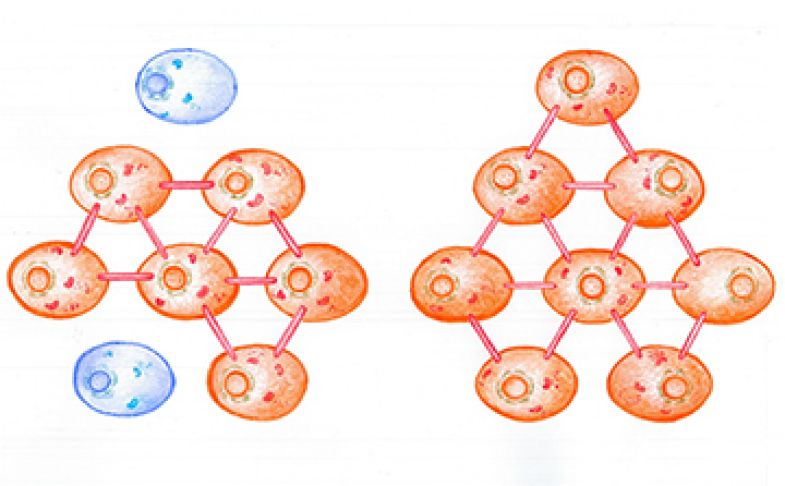Connexins (Cxs) are a group of transmembrane proteins that assemble to form gap junction channels (GJCs). Each GJC is composed of two hemichannels or connexons, which in turn are constructed of six Cxs. These GJCs directly communicate the cytoplasm of two cells in contact, while the hemichannels permit an exchange of metabolites between the cytoplasm and the intracellular space. Thus, Cxs connect the cells with each other and their environment. In this context, mutations in Cx-encoding genes can relate to functional and developmental abnormalities.

Cx46 and cancer
Evidence demonstrates that Cxs are related to cancer development/aggressiveness. Therefore, new research lines could be pursued in medical therapies against cancer, for the purpose of assessing whether manipulating those Cxs with different agents may affect the life of carcinogenic cells.
Under normal conditions, Cx46 is found in hypoxic tissues such as the lens, thus indicating that Cx46 aids carcinogenic cells to survive in hypoxia. This suggests that Cx46 may directly influence tumor growth and the appearance of metastasis. UDD researchers have been studying the connection between Cx46 and cancer. Dr. Retamal believes that changing Cx46 activity may alter the defensive efficiency of carcinogenic cells in making them susceptible to drugs, which would limit the growth of a tumor or at least make it more sensitive to chemotherapy. Therefore, this treatment could potentially reduce both anticancer drug concentration as well as the number of therapy sessions, which would significantly improve the patient´s quality of life.
While the application of chemotherapy affects both carcinogenic and non-carcinogenic cells of the body, Cx46 will influence almost exclusively the tumor cells rather than other cells in the body.






